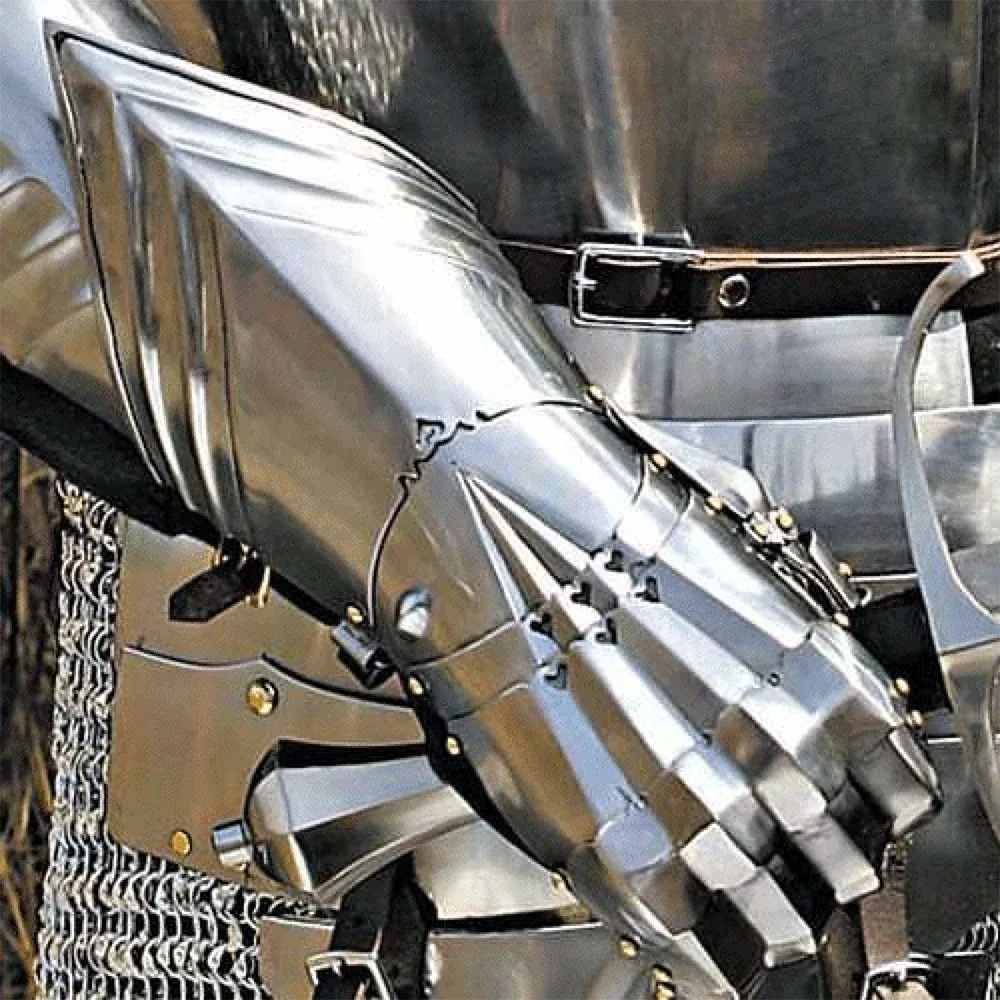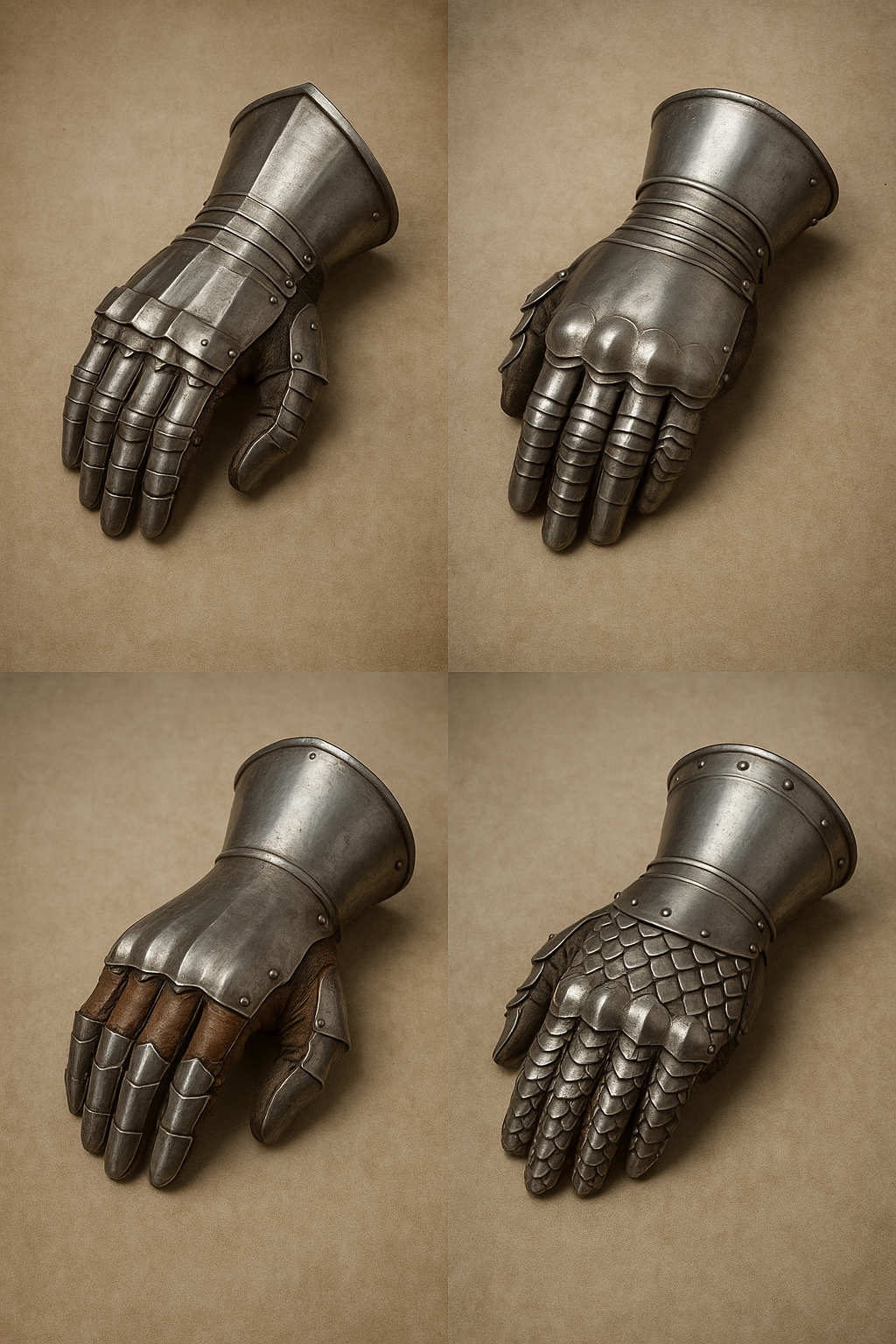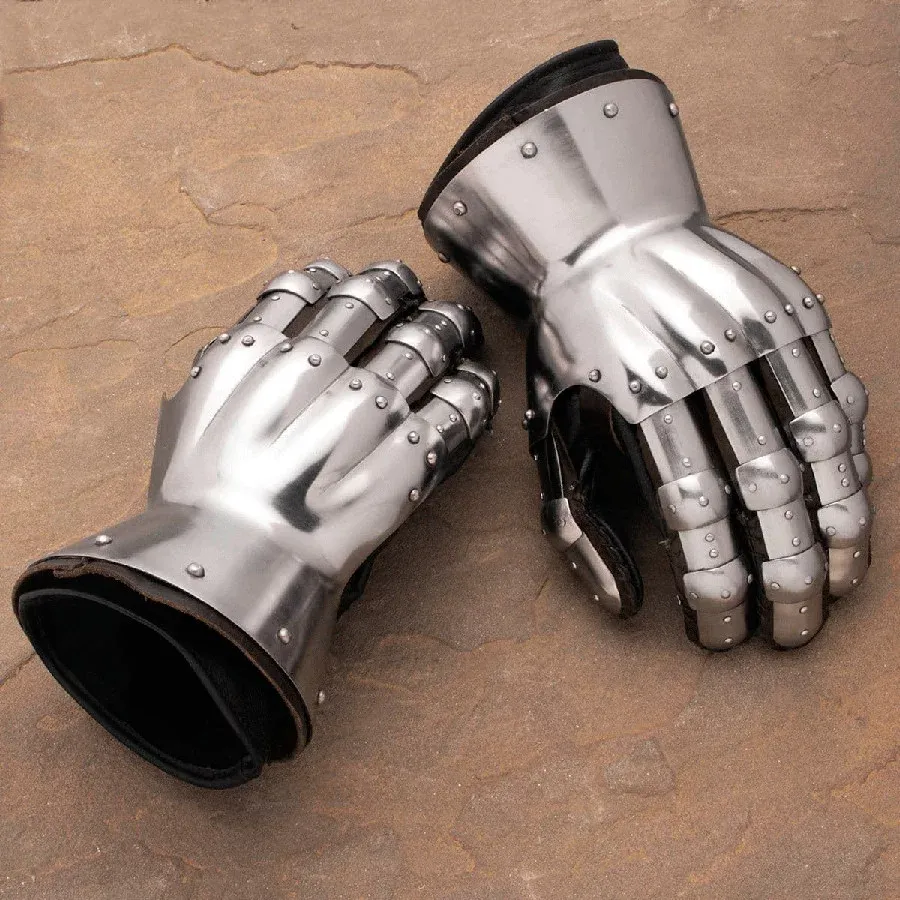What are Gauntlets?
The gauntlets, also known as mittens, are an essential piece of medieval armor that served to protect the hands, fingers, wrists, and part of the forearm of knights during combat. Designed to provide effective defense, these artifacts were vital on the battlefield as they offered protection without sacrificing the necessary maneuverability to handle weapons.
Origin and History of Gauntlets
The history of gauntlets dates back to the time of the Persians, who were pioneers in using hand protections in warfare, initially made from tough leather. However, over the centuries, they underwent significant evolution to adapt to the new demands of medieval warfare.
- 11th and 12th centuries: During this period, gauntlets were made of chainmail, evolving from the sleeves of the hauberk. In France, they featured an opening at the cuff to free the hand when necessary.
- 14th century: The separation of the fingers was introduced, which improved the dexterity of the knights.
- 15th century: The shape evolved into gauntlets, with steel pieces molded to follow the natural structure of the hand.
- 16th century: The invention of the pistolet led to a redesign, allowing full separation of the fingers to handle firearms.

Types and Characteristics of Gauntlets
Throughout medieval history, different types of gauntlets were developed, each designed for a specific function in combat:
- Jousting gauntlet: Worn on the left hand during jousts, it lacked finger articulation, as its primary function was to withstand impacts.
- Slashed gauntlet: Characterized by separated fingers and multiple articulated pieces, serving as a differentiation from single-piece models.
During the tournaments of the 15th and 16th centuries, it was common for knights to wear a mixed configuration, using different models for each hand depending on their main function in combat.

Materials and Manufacturing
Gauntlets were primarily made of sheets of steel that followed the shape of the hand and fingers, a process that required remarkable precision. During the Gothic period, some models consisted of numerous articulated pieces to ensure both protection and agility.
The typical fastening system included leather straps and brass buckles, providing a secure fit that allowed the knight to use their hands effectively during combat.
Importance on the Battlefield
More than simple accessories, gauntlets were essential elements for the safety of knights, offering crucial defense against enemy weapons. Their design continuously evolved to find the perfect balance between protection and mobility. They withstood blows and cuts while allowing the user to handle weapons with skill, reflecting the innovation in combat techniques and metallurgy of that time.
Gauntlets Today
Today, gauntlets have transcended their original function. Transformed into collector's items and decorative elements, they are also used in historical reenactments. Among current models are:
- Mittens and articulated gauntlets that offer different levels of mobility and protection.
- Gothic and Milanese designs, recognized for their beauty and ornamental details.
- Fantasy models for use in medieval fairs and live role-playing events.

For collectors and participants in reenactments, maintaining gauntlets is essential. Leather models require regular cleaning, and steel ones must be kept free of rust through cleaning and oiling.
The evolution of gauntlets from simple leather gloves to sophisticated pieces of art and protection illustrates humanity's ability to innovate in adapting to new challenges, reflecting centuries of development in the art of war and offering a fascinating glimpse into the past for enthusiasts and historians alike.
















